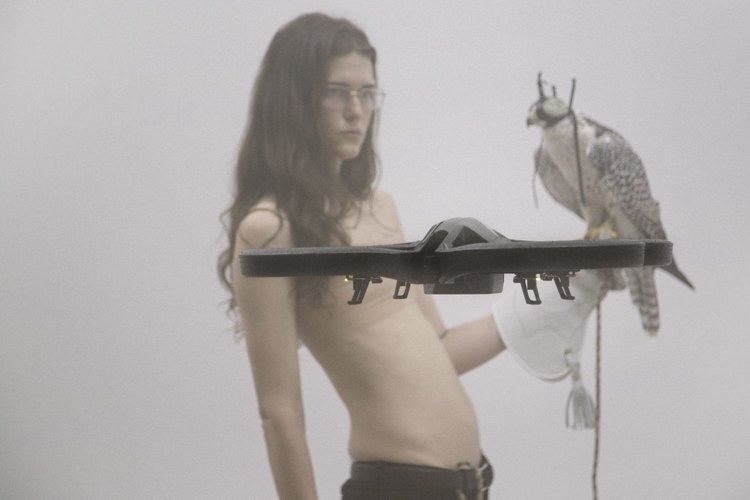Stroom Invest interviews / curator #7 Laurie Rojas
Laurie Rojas (b. Panama, 1982) is a journalist and an art critic based in Berlin. She received an M.A. in New Arts Journalism in 2010 from The School of The Art Institute of Chicago, were she wrote her graduate thesis on Confronting the ‘Death’ of Art Criticism. She currently reports on Berlin, Spanish and Latin American art news for The Art Newspaper.

What are you currently working on?
I am a critic and a journalist. I regularly write about exhibitions and the art market in Europe and Latin America. I cover and report on several major art fairs in Europe, most recently Art Brussels and Art Cologne, but others such as Frieze, Art Basel, ArcoMadrid, Art Berlin, MiArt, Artissima, among others. I also cover the Berlin Art scene, including auctions, museum developments, and the gallery scene.
I am also one of the founding editors of the online art criticism journal Caesura. I write in depth reviews and contemporary art analysis for them.
I recently run a series of workshops on the global art market in Panama, directed to artists and collectors. The workshop was motivated to develop ways of strengthening the art ecosystem there.

What are some of your favorite projects you’ve been involved in? Either one-time or on-going.
Some of my favorite projects usually involve collaborative experiments. Including running art criticism publications and hosting art discussion salons.
What is your favorite part of being a curator?
I am not really a curator, although I have organized and supported organizing of exhibitions and curatorial projects in Berlin, Venice and Panama (where I am from). My favorite part here is creating spaces and opportunities for critical dialogues between artists and different actors in the art world.
What is your idea of perfect art?
There is no such thing as perfect art. Its art’s imperfections that open up more possibilities. But I tend to be more challenged and interested in art that gets under your skin. Art that is self-reflective and self-critical, which challenges me and my thinking about art. Art that explores issues of art’s value and process ambivalently interest me the most.
What do you consider the most overrated quality in art?
I am not sure if art is ever overrated. Artists become art market stars and brands, but many of those artists do create great art, and often happen to be very popular with the general public. Its important to work through the relationship of art’s economic value to art’s symbolic value. Additionally, I am doubtful of anything being labelled “new”. Most tendencies considered new have historical counterparts or influences, and for me it’s important to stress continuity and development over absolute newness and discontinuity.
What is your motto or personal philosophy?
It’s important to explore ambivalence in art works, not reduce art works to easy readings. Art works need to be engaged critically, that is through their limitations and potential. How do art works point beyond themselves?
What artists or movements have most influenced your life or way of thinking?
Practices that fall under critical art interest me the most. My influences are mostly from ways of thinking about art, not particular artists or movements, meaning the writings of the Frankfurt School, especially Adorno’s Aesthetic Theory. But I find relational aesthetics and post-internet art some of the most interesting developments in art that have affected my thinking. I follow social and political art practices closely, but also have an interest in formal-driven practices and issues.
What is the best dialogue on art that you have experienced?
Panel event in Berlin: The Critical Condition. Where we discussed the role of the critic with several artists, including Simon Denny and Daniel Keller, and critics.
How would you describe the art scene in your country/region?
I am part of several different art scenes. Most people know about Berlin, it is a small-ish but dynamic scene with a lot of international people such as myself. It’s a close nit and supportive environment, many different kinds of scenes and practices interact with one another. I can say that Panama’s art scene, on the other hand, is still very young and small. Unfortunately it is at this moment very isolated internationally, but that is changing. Artists in Panama are experimenting with different aspect of the legacy of tropical modernism.
What do you hope to experience during your visit in The Hague?
I am looking forward to the conversations, meeting artists and learning about their work, and learning from how other people make and discuss contemporary art.
—————————————–
In a collaboration between Jegens & Tevens and Stroom Den Haag a series of interviews will be published with (inter)national curators, artists and critics participating in Stroom’s Invest Week 2018.
The Invest Week is an annual 4-day program for artists who were granted the PRO Invest subsidy. This subsidy supports young artists based in The Hague in the development of their artistic practice and is aimed to keep artists and graduates of the art academy in the city of The Hague. In order to give the artists an extra incentive, Stroom organizes this week that consists of a public evening of talks, a program of studio visits, presentations and a number of informal meetings. The intent is to broaden the visibility of artists from The Hague through future exhibitions, presentations and exchange programs. The Invest Week 2018 will take place from 18 to 22 June, the public evening is on Wednesday following the exhibition My Practice My Politics.